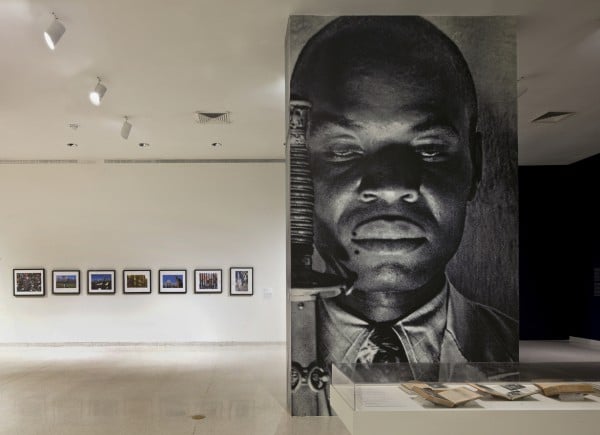Art & Exhibitions
See What Haiti Really Looks Like, Through the Eyes of Haitians
These photographs will change how you understand the country.

These photographs will change how you understand the country.

Cait Munro

The NSU Art Museum Fort Lauderdale‘s current exhibition, From Within and Without: The History of Haitian Photography, couldn’t come at a better time—thanks to both a growing interest in photography, and the desire to understand Haitian history and culture in the wake of the Dominican Republic’s decision to conduct mass deportations of Haitian migrant workers.
Photography has proved an important medium for preserving the narratives of Haiti’s people, culture, and politics, and the exhibition features nearly 350 images culled from documentary, commercial, fine art, and official state archives by Haitian artist and curator Edouard Duval-Carrié. On view is work by Miami-based Haitian photojournalist Carl Juste, a member of the Iris PhotoCollective, as well as Chantal Regnault, a French-Haitian photographer famous for her images of the New York voguing/ball scene.
From Within and Without traces Haiti’s journey as a nation from the late 19th century, when photo studios were erected in major cities in order to document the country’s political elites and wealthy merchant class, to modern moments of political upheaval, such as in the wake of the catastrophic 2012 earthquake.

Installation view.
Photo: Courtesy NSU Art Museum.
Photographs taken in the early-mid 1900s reveal landmark sites like Port-au-Prince’s Metropolitan Bazaar, the National Bank of Haiti, the Presidential Palace, and the National Cathedral, while subjects include former presidents Francois Duvalier, Elie Lescot, Paul Magloire, and Stenio Vincent, as well as children, families, military leaders, farmers, and Vodou priests.
Duval-Carrié told South Florida magazine that his ultimate goal was to create something that would “humanize and complicate” outsider’s visions of Haiti, which he feels is often too simplified.
“What I’ve realized [is] that there is definitely a vision from the exterior of Haiti that does not really match what is happening down there, or how we perceive ourselves,” he explained. “Haitians have a very short memory, also. So it’s good for them to realize where they came from, and where they are heading.”
Duval-Carrié also notes that Florida is experiencing an influx of Haitian immigrants, many of whom arrived in the United States on Temporarily Protected Status after the 2012 earthquake. Meanwhile, in the Dominican Republic, Haiti’s foreign minister Lener Renauld has called for a “more humane treatment or approach” to the migration crisis, which has seen undocumented Haitians dumped at the border “like dogs.”
While From Within and Without is the first comprehensive exhibition of Haitian photography, museum director Bonnie Clearwater concedes that it’s a big story to tell with just one show. “Even with 350 photographs we can’t possibly tell the full story. We know this is the beginning,” she told the Sun Sentinel.

Paolo Woods,The Milano Beauty Parlor (2011).
Photo: Courtesy of Paolo Woods

Anonymous, Untitled (Doctor with Patient at His Clinic), n.d.
Photo: Courtesy of the CIDIHCA Collection, Montreal Canada © CIDIHCA Collection, Montreal Canada

Chantal Regnault, Easter Monday at LAKOU SOUVNANS (2000).
Photo: Courtesy of Chantal Regnault.

Andrea Baldeck, Figu ou se Paspo ou (Your Face is Your Passport) (1996).
Photo; Courtesy of Andrea Baldeck.